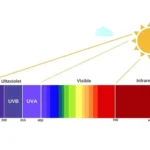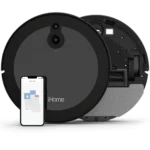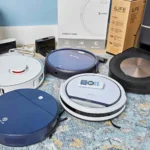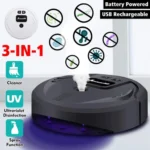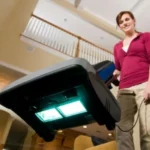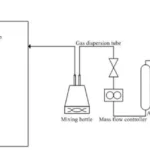When it comes to keeping our homes clean and healthy, we always want the best possible method. Vacuuming is a common practice and has been done for decades, but there is a new player on the block – UV sterilization. The concept of using UV light for cleaning may sound futuristic and perplexing, but it is gaining popularity. So, which method cleans better? Is UV sterilization worth the switch? In this article, we’ll explore the differences and similarities between UV sterilization and traditional vacuuming and help you make an informed decision.
What is UV Sterilization?
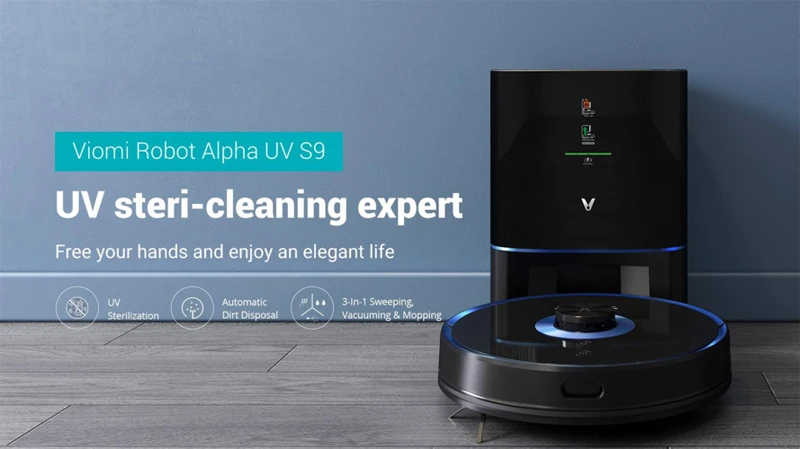
UV sterilization, also known as ultraviolet germicidal irradiation, is a powerful method of cleaning that has been gaining popularity in recent years. Using UV light, this innovative cleaning technology eliminates germs, bacteria, viruses, and other harmful microorganisms from surfaces and the air. This method is common in hospitals, but now it’s becoming more widespread, and some smart vacuums are even incorporating UV sterilization as a feature. Let’s explore how UV sterilization works and what its benefits are compared to traditional vacuuming. For more information about UV sterilization smart vacuums, check out our guide.
How UV Sterilization Works
UV sterilization works by using ultraviolet light to kill germs, bacteria, viruses, and other microorganisms that may be lurking in your home. Here’s how it works:
- UV light damages DNA: UV light damages the DNA of microorganisms, preventing them from reproducing and rendering them harmless.
- UV-C light: UV sterilization uses a specific type of ultraviolet light called UV-C, which has a wavelength of between 200 and 280 nanometers. This type of light is highly effective at killing germs.
- Disrupting cell functions: When bacteria and other germs are exposed to UV-C light, it disrupts their vital cell functions, including their ability to replicate and infect humans or animals.
- Effective on both hard and soft surfaces: UV sterilization can be used on both hard and soft surfaces to kill germs. Smart vacuum cleaners with UV sterilization functionality can disinfect floors, carpets, and other surfaces in your home.
- No chemicals: UV sterilization doesn’t require any chemicals to be effective, making it an eco-friendly and non-toxic choice for cleaning.
Using a smart vacuum with UV sterilization can provide additional health benefits for your home. Studies have shown that UV-C light can effectively kill allergens and mold spores, reducing allergy symptoms and improving indoor air quality. It can also help prevent the spread of illnesses, making it an especially useful tool during cold and flu season.
Benefits of UV Sterilization
UV Sterilization is a method of cleaning that has been gaining in popularity in recent years. This innovative technology uses ultraviolet light to kill bacteria and viruses, making it an effective way to keep your home or workplace clean and healthy. Here are some of the benefits of UV sterilization:
| Benefit | Description |
|---|---|
| Efficiency | UV sterilization is a highly effective method of cleaning because it kills up to 99.9% of bacteria and viruses that are present on surfaces. This is much more effective than traditional cleaning methods, like wiping down surfaces with disinfectant sprays or wipes. |
| Safety | UV sterilization is a safe and non-toxic method of cleaning. Unlike harsh chemicals that can be harmful to people and pets, UV sterilization uses only light to kill bacteria and viruses. |
| Convenience | UV sterilization is a simple and quick way to clean your home or workplace. All you need is a UV sterilization device, and you can clean surfaces in just a few minutes. There is no need to use any additional cleaning products, which makes this method of cleaning much more convenient than traditional cleaning methods. |
| Eco-friendly | UV sterilization is an environmentally friendly cleaning method because it does not require the use of harsh chemicals that can harm the planet. This makes it a great option for people who are looking for ways to reduce their environmental impact. |
As you can see, UV sterilization has numerous benefits for anyone looking to keep their environment clean and healthy. If you’re interested in learning more about UV sterilization and smart vacuums, check out our guide on /smart-vacuum-uv-benefits/.
What is Traditional Vacuuming?
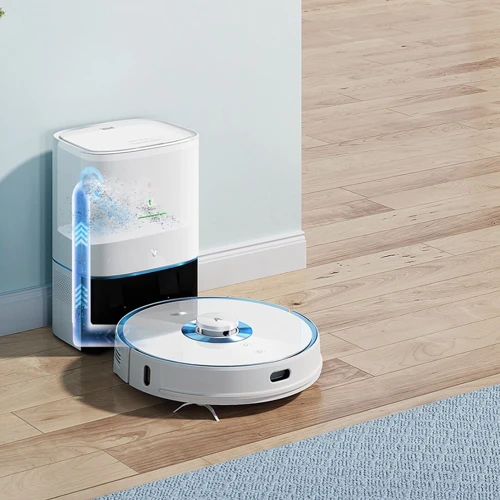
When it comes to keeping your living space clean, traditional vacuuming is a method that has been around for decades. The process usually involves using a motorized device to suck up dust, dirt, and debris from various surfaces. While it may seem old-fashioned compared to the advanced technology of UV sterilization, traditional vacuuming still has its place in many households. Whether you prefer the reliability of an old-school cleaning method or are simply looking for a cost-effective way to keep your floors and furniture free of dirt and debris, traditional vacuuming might be the right choice for you. However, if you’re interested in exploring a more futuristic cleaning option, be sure to check out our guide to smart vacuums equipped with UV sterilization.
How Traditional Vacuuming Works
Traditional vacuuming is a method that has been used for many years to remove dust, dirt, and debris from floors, carpeting, and other surfaces. This cleaning method relies on suction and a motorized brush to pick up particles from surfaces. The vacuum cleaner’s motor creates a low-pressure air stream that sucks in air, dirt, and dust. The dirt and dust are collected in a bag or canister, and the filtered air is expelled back into the room.
How Traditional Vacuuming Works:
| Steps | Explanation |
|---|---|
| Step 1 | The vacuum cleaner is turned on and the motor creates a low-pressure air stream that creates suction. |
| Step 2 | A motorized brush or beater bar is used to agitate carpet fibers or other surfaces, dislodging dirt and debris. |
| Step 3 | Dirt and dust are picked up by the suction created by the vacuum cleaner and collected in a bag or canister. |
| Step 4 | The filtered air is expelled back into the room. |
Traditional vacuuming is an effective method for removing loose dust, dirt, and debris from floors and surfaces. However, it may not be as effective in removing smaller particles like allergens and bacteria from the air. It may not be as convenient as UV sterilization as it requires frequent changing of bags or emptying of canisters.
If you want to learn more about UV sterilization and how it can be incorporated into smart vacuum cleaning, check out our UV Sterilization Smart Vacuum Guide. Or if you’re curious about the future of cleaning with UV vacuums, read our article on Future Cleaning with UV Vacuums to stay up-to-date on the latest cleaning technology trends.
Benefits of Traditional Vacuuming
Traditional vacuuming has been a go-to method for keeping floors and carpets clean for decades. The benefits of this tried and true cleaning method are numerous and cannot be ignored. Here are just a few benefits of traditional vacuuming:
- Removes Dirt and Debris: A traditional vacuum cleaner uses suction to remove dirt, dust and debris from your floors and carpets. It is effective in getting deep into the fibers of carpets to remove dirt and pet hair that may not be seen with the naked eye.
- Improves Air Quality: Traditional vacuuming not only removes visible dirt and debris from your floors and carpets but also improves air quality by removing harmful allergens, dust, and bacteria that may be present in your home. This is especially beneficial for people who suffer from allergies or respiratory issues.
- Convenient: Traditional vacuuming is a simple and convenient way to clean floors and carpets. It is easy to use and requires little to no setup time. You can quickly tackle any messes that may arise without having to wait for a professional cleaning service to arrive.
- Cost-Effective: Investing in a quality vacuum cleaner is a cost-effective way to keep your home clean. In comparison to other cleaning methods, such as professional cleaning services or renting a steam cleaner, vacuuming is a budget-friendly option that saves you money in the long run.
- Increases Lifespan of Floors and Carpets: Traditional vacuuming helps to keep floors and carpets in good condition by removing dirt and debris that can be abrasive and degrade the fibers. This increases the lifespan of your floors and carpets, saving you money on replacements in the long run.
Traditional vacuuming is a reliable and effective way to keep your floors and carpets clean. It is a cost-effective, convenient, and easy method that can improve air quality and extend the lifespan of your floors and carpets.
Comparison: UV Sterilization vs Traditional Vacuuming
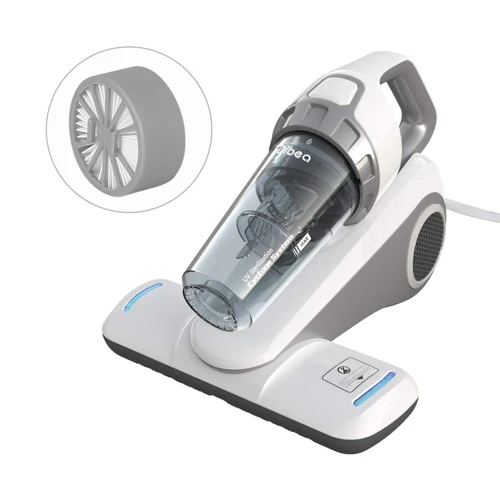
Now that we understand the basic principles behind UV sterilization and traditional vacuuming, it’s time to compare the two methods and determine which one comes out on top. Both technologies have their strengths and weaknesses, and it’s important to weigh these carefully before deciding which method is right for you. Let’s take a closer look at the effectiveness, convenience, and cost of UV sterilization versus traditional vacuuming.
Effectiveness
When it comes to the effectiveness of cleaning, both UV sterilization and traditional vacuuming have their own unique strengths.
UV Sterilization Effectiveness: UV sterilization has been proven to be highly effective in killing up to 99.9% of germs and bacteria, including those that cause illnesses like the flu and salmonella. It also eliminates odors and allergens, making it a great choice for those with allergies. UV sterilization is especially effective in killing bacteria and viruses on a variety of surfaces including bedding, upholstery, floors, and even clothing.
Traditional Vacuuming Effectiveness: Traditional vacuuming is effective in removing dirt, dust, and debris from carpets, floors, and upholstery. Vacuuming eliminates visible debris that can contribute to poor air quality and respiratory issues, making it an essential part of any cleaning routine. While it may not be as effective as UV sterilization in killing germs and bacteria, regular vacuuming can reduce the number of these particles, making the environment much cleaner and healthier.
Comparison: Although both methods are effective, they target different aspects of cleaning. While UV sterilization mainly targets germs and bacteria, traditional vacuuming targets visible debris. To achieve the best results, it is important to use both methods in conjunction with one another. For example, vacuuming first will remove any visible debris, and then following up with UV sterilization will provide a thorough disinfection of the area.
| UV Sterilization | Traditional Vacuuming | |
|---|---|---|
| Strengths | – Highly effective in killing germs and bacteria – Eliminates odors and allergens |
– Removes dirt, dust, and debris from surfaces – Improves air quality |
| Weaknesses | – Does not remove visible debris – Can be expensive |
– Does not disinfect surfaces – May not be able to reach tight spaces |
Ultimately, both UV sterilization and traditional vacuuming have their own unique benefits and weaknesses. Choosing the right method will depend on your specific cleaning needs and priorities. However, utilizing both methods together can provide a more comprehensive and effective cleaning regimen.
Convenience
Convenience is an important factor to consider when deciding between UV Sterilization and Traditional Vacuuming. Let’s explore the convenience of both methods through different scenarios.
– Time: Traditional Vacuuming is generally faster than UV Sterilization because it can cover a larger area in a shorter amount of time. However, it can get tiring to push around a heavy vacuum for extended periods. On the other hand, UV Sterilization is more time-consuming but requires less physical effort as it can disinfect surfaces without much manual labor.
– Reach: Traditional Vacuuming can reach nooks and crannies, corners, and tight spaces, which can be challenging to access with UV Sterilization. However, UV Sterilization can cover more surface area faster, which makes it more efficient for vast spaces.
– Maintenance: Traditional Vacuuming requires frequent maintenance, such as emptying the dustbin, checking the filters, and replacing them when necessary. It also requires the use of additional attachments like crevice tools, upholstery brushes, and nozzle attachments, which may require space to store. On the other hand, UV Sterilization requires minimal maintenance in comparison, as there are no filters, dustbins, or attachments to worry about.
In terms of convenience, both methods have their pros and cons, and it ultimately depends on the user’s preference and situation. If time is of the essence, Traditional Vacuuming may be a better choice. However, if the user lacks the physical capacity for manual labor, UV Sterilization may be the way to go. Additionally, if the user has to disinfect a large open area, UV Sterilization may be a more convenient option.
Tip: Whatever method you choose, it’s essential to follow the instructions carefully to ensure maximum efficiency and safety.
Cost
When it comes to cost, UV sterilization and traditional vacuuming differ in several ways.
Upfront cost: Traditional vacuum cleaners tend to be less expensive upfront compared to UV sterilization devices. You can easily find a good-quality traditional vacuum cleaner for under $100, while UV sterilization devices can cost upwards of $200 or more depending on the technology used.
Operating cost: Traditional vacuum cleaners require ongoing expenses, such as electricity and replacement of dust bags or filters. On the other hand, UV sterilization devices are generally less expensive to operate since they use UV-C light that doesn’t need any replacement parts.
Long-term cost: Traditional vacuum cleaners typically last about 5-10 years, whereas UV sterilization devices can last up to 15 years or more. This means that over the long haul, UV sterilization could be more cost-effective since you won’t have to replace the device as often.
Maintenance cost: Traditional vacuum cleaners require regular maintenance, such as cleaning the dust bags and replacing filters. UV sterilization devices, however, require less maintenance because they rely on UV-C light, which doesn’t produce much waste.
It’s important to note that while UV sterilization devices may have a higher upfront cost, they can potentially save you money in the long run due to their durability and low-maintenance requirements. Ultimately, it’s up to you to determine which method fits your budget and cleaning needs best.
Which Method Should You Choose?
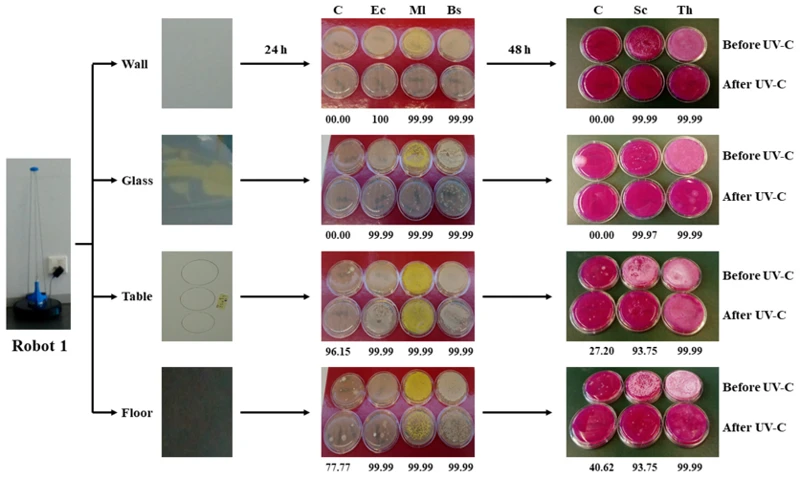
Choosing between UV sterilization and traditional vacuuming can be challenging as both have their advantages and shortcomings depending on your needs. Here are some factors to consider before making a decision.
Effectiveness: When it comes to eliminating germs, UV sterilization has a significant advantage over traditional vacuuming as it can kill up to 99.9% of bacteria and viruses without the use of chemicals. Traditional vacuuming, on the other hand, only removes visible dirt and debris.
However, if you’re dealing with dust and pet hair, traditional vacuuming will do a better job than UV sterilization.
Convenience: If you’re looking for a cleaning method that is easy to use and doesn’t require much effort, then UV sterilization is the way to go. You can simply turn on the device and let it do its job, while you focus on other tasks. With traditional vacuuming, you need to push the machine around, attach different heads, and move furniture around to get to all the areas.
Cost: In terms of cost, traditional vacuuming is more affordable than UV sterilization. A high-quality vacuum cleaner can cost hundreds of dollars, but it can be used for years. UV sterilization, on the other hand, requires a specialized device that can cost between $50-$200, and you may need to replace the bulbs after a certain amount of use.
Tips for Using UV Sterilization and Traditional Vacuuming:
Whether you choose UV sterilization or traditional vacuuming, here are some tips to help you get the most out of your cleaning method:
– Regularly clean and maintain your cleaning device to ensure it is working effectively.
– Use UV sterilization as a complementary method to traditional vacuuming, especially on high-touch surfaces such as light switches and doorknobs.
– Use a high-quality vacuum cleaner with a HEPA filter that can trap small particles and allergens.
– Use attachments to get into tight spaces, corners, and crevices where dirt and germs can accumulate.
The choice between UV sterilization and traditional vacuuming largely depends on your cleaning needs and preferences. Both have their advantages and shortcomings, and it’s up to you to decide which one is the best fit for your home or business.
Tips for Using UV Sterilization and Traditional Vacuuming
Keeping a clean and healthy environment is essential for our wellbeing. To achieve this, it is crucial to use the right cleaning methods for the job. Both UV sterilization and traditional vacuuming are effective ways of cleaning our homes, but they require specific techniques to get the best results. Here are some tips for using UV sterilization and traditional vacuuming:
UV Sterilization:
1. Use the correct wattage: For best results, use a UV sterilizer with a minimum of 35 watts. This will ensure that enough UV-C light is produced to kill germs and bacteria effectively.
2. Follow manufacturer’s instructions: Always read and follow the manufacturer’s instructions for your UV sterilizer. Using it correctly will ensure that you get the best results and make your investment last longer.
3. Use on a regular basis: UV sterilization is not a one-time fix. For optimal results, use it regularly on surfaces that are frequently used or touched by multiple people.
4. Clean surfaces before use: Ensure that surfaces are clean and free of dirt and dust before using the UV sterilizer. This will ensure that the light is not blocked and can effectively eliminate germs and bacteria.
Traditional Vacuuming:
1. Choose the right vacuum: Select a vacuum that fits your needs and budget. Consider factors such as suction power, attachments, and weight to find one that will work best for you.
2. Use the right attachments: For different surfaces, use the appropriate attachment. For example, use a crevice tool for tight spaces, and a dusting brush for delicate surfaces.
3. Change the bag or empty the canister: Regularly change the vacuum bag or empty the canister to ensure that the vacuum maintains its suction power and doesn’t spread dirt and dust around.
4. Vacuum regularly: Vacuum high traffic areas such as the living room and bedroom daily. For other areas such as the guest room, vacuum once a week. Regular vacuuming prevents dust build-up, which can lead to respiratory problems.
Both UV sterilization and traditional vacuuming are effective cleaning methods if used correctly. By following these tips, you can ensure that you get the best results and maintain a healthy, clean living environment.
Conclusion
After comparing UV sterilization and traditional vacuuming, it’s clear that both methods have their pros and cons. UV sterilization is highly effective in killing germs and viruses, making it an ideal choice for those who prioritize cleanliness and hygiene. However, it can be more expensive and less convenient than traditional vacuuming.
On the other hand, traditional vacuuming is a more affordable and convenient option for regular cleaning. While it may not kill germs and viruses as effectively as UV sterilization, it still offers many benefits, such as removing dust, dirt, and allergens from your home.
Ultimately, the choice between UV sterilization and traditional vacuuming depends on your specific needs and preferences. If you’re looking to remove germs and viruses from your home, UV sterilization may be the best choice for you. But if you’re looking for an affordable and convenient way to keep your home clean on a regular basis, traditional vacuuming is the way to go.
Keep in mind that both methods can be used together for an even more thorough cleaning. For example, you could vacuum your home regularly and then use a UV sterilizer to kill any remaining germs and viruses.
Whichever method you choose, it’s important to use it correctly and consistently. Make sure to follow the instructions carefully and use the equipment as directed. By doing so, you can ensure that your home stays clean and healthy for you and your family.
Frequently Asked Questions
How long does UV sterilization take?
The amount of time it takes for UV sterilization to clean a surface depends on the size of the surface and the strength of the UV light being used. In general, it takes around 10-15 seconds per square foot.
Can UV sterilization kill all types of germs?
While UV sterilization is effective against a wide range of germs, it cannot kill all types of pathogens. Some viruses and bacteria are resistant to UV light.
Does traditional vacuuming kill germs?
No, traditional vacuuming does not kill germs. It only removes dirt, dust, and debris from surfaces.
How often should I use UV sterilization?
This depends on the level of contamination in your environment. If you live in a high-traffic area or have people with weakened immune systems in your home, you may want to use UV sterilization more frequently.
Can UV sterilization damage surfaces?
UV sterilization can damage certain materials, such as fabric or artwork. Be sure to read the instructions and check the compatibility of your surfaces before using UV sterilization.
Is traditional vacuuming suitable for all surfaces?
No, some surfaces, such as hardwood floors or delicate fabrics, may be damaged by traditional vacuuming. Make sure to use the appropriate vacuum attachments or hire a professional cleaner.
How does UV sterilization affect air quality?
UV sterilization can improve air quality by killing airborne pathogens, such as bacteria and viruses. However, it is not effective against all types of air pollutants.
Is UV sterilization safe for pets?
UV sterilization can be harmful to pets if they are exposed to the light directly for an extended period of time. Make sure to keep pets out of the room while using UV sterilization.
Can traditional vacuuming improve indoor air quality?
Yes, traditional vacuuming can help improve indoor air quality by removing dust, dander, and other particles that can circulate in the air.
What are the maintenance requirements for UV sterilization and traditional vacuuming?
Both UV sterilization and traditional vacuuming require regular cleaning and maintenance to ensure they operate effectively. Make sure to clean filters, empty dustbins, and replace bulbs or parts as needed.

